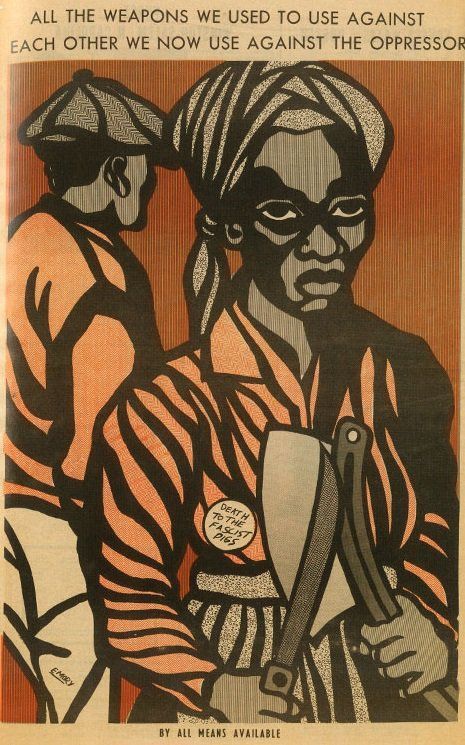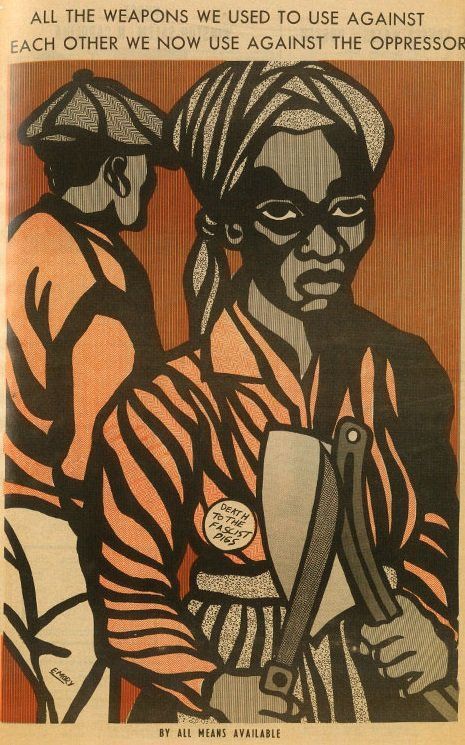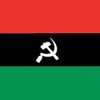Some Thoughts on Revolutionary Art
"...To depict a slum is one thing, to depict the masses of tenants rising up against a slumlord and transforming the community through their own hands is another."


“Let’s go a step further using a specific example: Where are the theories of culture, the literary criticism or even discussion of television that any real revolutionary movement would need? Where is our Yenan Forum for this generation’s multimedia world? Where are the works (or even serious commentary) on film, philosophy, geology, geography, linguistics, physics and more? Where is any analysis or visionary exploitation of the internet and all the dizzying opportunity in the new media?"
— Nine Letters to Our Comrades, Mike Ely
The role of revolutionary art and music can not be overstated in the preparation of a people for revolution. However, a major mistake that many would-be revolutionaries and organizers from petit-bourgeois backgrounds make is that they display either a fetishization of those who they believe are the revolutionary subject (whether they be white working class people or Black lumpen proletarians) and subsequently end up depicting them from the point of view of outsiders. To depict a community accurately and ensure that our propaganda reflects a correct political line, we must first consult with that community and develop mass contacts among them. What are the major and minor contradictions, what are the opinions of the advanced on rectifying them, what new contradictions will arise? Without grasping the essence of a community through firm and thorough integration there can be no question of developing correct propaganda that depicts things not only as they are, but more importantly as they should be. The point of propaganda and revolutionary art is to inspire, develop, and raise political consciousness. To depict a slum is one thing, to depict the masses of tenants rising up against a slumlord and transforming the community through their own hands is another. The same goes for revolutionary music and criticism of bourgeois/petit-bourgeois art. We realize as Maoists that everything has a class nature. For example, the film Black Panther is a bourgeois-liberal film and depicts a bourgeois liberal political line. Maoists shouldn’t swallow things just because they depict a certain community or a certain group “positively”, we have to consider where this representation is leading and what it is implanting into the minds of our people, politically. This is part of our role as tribunes of the people, merciless criticism and exposure of all that exists. The Coup, Dead Prez, Bambu, etc. are all revolutionary musicians and lyricists in that they accurately depict the struggles of working class communities because they come from them and still have roots there. It would be the job of a revolutionary Marxist-Leninist-Maoist political party to not only include artists such as these in our work but actively recognize and cultivate people’s artists from among our own ranks and spread our political line through music, murals, film and other media. The role of the internet also can’t be downplayed. Of course, the trend called “meme communism” is more often than not a vulgarization of political theory and line and in many instances a substitute for political organizing offline, but we shouldn’t scoff at the fact that many of the modern day generation of Communists or aspiring Communists were radicalized through the internet (as were almost the entirety of the alt-right/fascists, who got their start on 4Chan and similar sites). The mark of the successful organizer is the ability to take the most cutting edge media available and use it to recruit, inform, raise awareness, fundraise, and carry out political work well. To do this requires active study and development of propaganda bureaus and squads that have cultivated their talents and raised their skill level (along with political) and are able to develop new Communists everywhere they paint, perform, and travel.
